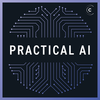TensorFlow in the cloud
Craig Wiley, from Google Cloud, joins us to discuss various pieces of the TensorFlow ecosystem along with TensorFlow Enterprise. He sheds light on how enterprises are utilizing AI and supporting AI-driven applications in the Cloud. He also clarifies Google’s relationship to TensorFlow and explains how TensorFlow development is impacting Google Cloud Platform.
